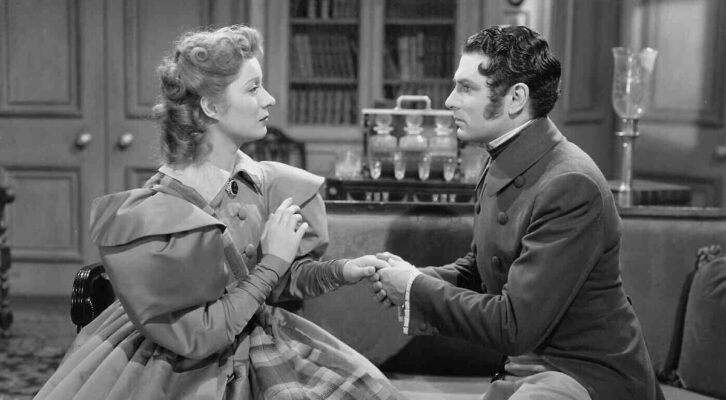Lisa Frankenstein is a Charming Comedy, Even If It’s Missing Some Parts
Olivia Rutigliano on Diablo Cody and Zelda Williams's 80s-throwback, Mary-Shelley-indebted, high-school zom-com
Mary Shelley did not grow up with a mother; she grew up with a dead mother. Her mother, the eighteenth-century writer Mary Wollstonecraft, had died giving birth to her in August 1797. Her father, the writer William Godwin, was so brokenhearted that he found it hard to be around young Mary. As a child, she spent much of her time at her mother’s gravestone in Saint Pancras’s Churchyard in Camden.
Muriel Spark has written about how Mary would go there alone to read, to think. Reportedly, she learned how to write her own name by tracing her mother’s tombstone. She would read her mother’s books furiously, studying them under the grave. As Sandra Gilbert wrote, Mary’s “only real ‘mother’” as a girl “was a tombstone.” It was the closest she could get to her brilliant, late mother.
It was also a place where she could escape her new family. When she was four, her father remarried, and Mary spent her childhood trying to avoid her stepmother, the obnoxious Mary Jane Clairmont, and dodging her clingy stepsister Claire. The Wollstonecraft gravesite was the only place where she felt like herself. And, as such, it was the place she brought the handsome poet Percy Shelley when she wanted to tell him that she had fallen in love with him.
Lisa Frankenstein, the new film written by Diablo Cody and directed by Zelda Williams, takes its inspiration from many different kinds of cult classics: murderous 80s high school flicks, Cody’s ahead-of-its-time high-school horror movie Jennifer’s Body, the Universal Studios monster movies of the 1930s and 40s, the ur–text of Frankenstein-derived sex comedies The Rocky Horror Picture Show, and of course, Mary Shelley’s 1818 novel Frankenstein, itself.
But it also draws from the life of Mary Shelley, a young woman who grew up feeling incomplete, afraid that her very existence was the thing that killed her incredible mother, a young girl who felt alone and looked for love, of many different kinds, in a cemetery.
In such a cemetery is where Lisa Frankenstein begins. Our heroine, Lisa Swallows (Kathryn Newton) spends her free time in an overgrown cemetery in the woods near her new house; in the wake of her mother’s tragic death, her father has remarried and moved the family to a new town. Lisa finds herself in a new school during her senior year, stuck with a nasty stepmother (Carla Gugino) and gleeful stepsister Taffy (Liza Soberano). Aside from Taffy, though, she is generally alone. She rarely speaks. She silently crushes on a brooding literary boy named Michael (Henry Eikenberry), spends Saturdays doing tailoring repairs at a dry cleaner’s, and generally recuses herself from family outings. The only place where she is able to relax is in this cemetery; she makes friends (as much as one can), with a tombstone, a weather-beaten bust of a young man who died during the Victorian era. There, she takes etchings of the grave, reads out loud, and gives the bust a rosary which had once belonged to her mother.
But one night, during a freak storm, a bolt of lightning brings the owner of Lisa’s favorite grave to life. And he (Cole Sprouse), mud-caked, decaying, bloated, full of insects, and missing quite a few body parts, comes to find her.
What develops is an entertaining comedy, part zombie movie, part romantic comedy, part goth-girl bildungsroman. Basically, Lisa has to try to figure out how to hide her new undead friend from her family and schoolmates. Until, that is, she and The Creature wind up with a dead body on their hands and realize that they can harvest parts to put him back together again, with help from Lisa’s stitching skills and a broken tanning bed with the power to electrocute. Visually, the film is stunning; the production design and cinematography glow in foggy, neon neo-gothic.
The word “Frankenstein” in the film’s title might reflect the film’s methodology as much as content; it is, ultimately, a composite of many different kinds of things from many different movies and eras and horror-phenomena, all knitted together into a film. But as it goes along, it does find an identity of its own. This is helped by the fabulous performance of Newton, absolutely nailing her character’s vibes from underneath a cloud of Elsa Lanchester-meets-Heather Chandler hair. Magnetically quirky and always sympathetic, her Lisa conveys fathoms of genuineness amid a movie full of appropriate genre and period artificiality (it’s the 80s). And Sprouse, by the way, is charming as the grunting-but-lovelorn corpse.
But the most interesting character in the film is ultimately Taffy, Lisa’s new stepsister, played to lovable earnestness by Soberano. In movies like this, where everything is exaggerated, it’s essential that the supporting characters remain cartoonish; real-world concerns and questions aren’t supposed to creep in. The loveliness of her character reflects the biggest issue with the film, which is that it teeters too far into sincere humanity.
You want to root for Lisa and The Creature to start harvesting body parts so that they can make him complete without feeling guilty about how this might psychologically affect others (the way you can, for example, root for the murderous inamorati, Winona Ryder and Christian Slater, in Heathers). And yet, Taffy’s richness does just that; it adds porosity to the neat, airtight little coffin that preserves the film’s dynamics. And you don’t want airholes in something like that! You don’t want the outside atmosphere to seep in, or it will speed up decay and ruin things.
Just because Lisa Frankenstein is missing a few limbs (actually, when you think about it, it’s that it has a few too many limbs), doesn’t mean that it’s not a wonderful time. Yes, as a horror comedy, it is a bit underdeveloped in places and overdeveloped in others. But as a work of literary-historical allusion and even reclamation, Lisa Frankenstein is tremendous.
I was delighted—delighted, I tell you—at how the dynamics of Mary Shelley’s biography were worked into the Frankenstein story. As both Dr. Frankenstein and Mary, with her eventual lover as both a Percy figure and The Creature, Lisa Frankenstein reshuffles the details of Shelley’s own life to give her legacy a kind of romantic fulfillment. Smartly responding to its source text, it braids together themes of isolation, motherly loss, romantic love, carnality, desire, and death.
Shelley’s opus reflects the attitudes about herself and her own life; Frankenstein is a tragedy about a monstrous child who ruins the life of his parent, who learns everything he can and traverses the world in an attempt to find meaning and never does. Percy Shelley, the man Mary brought into her world when she was a teenager, the one she hoped would take her away from her heartbreaking domestic situation, would become a harmful and destructive force in her life; he left his young wife and children to be with her, had affairs with others, including her stepsister, drove a wedge between her and her family. In Lisa Frankenstein, these details are moved elsewhere into the narrative, allowing the Romantic-era man who pledges his love to our Mary-stand-in to embody other qualities: namely, an undying devotedness to her. Which is fun and sweet.
In other words, Lisa Frankenstein is mostly a delight, a smart and earnest film whose heart beats for the texts that inspired it while also standing on its own two feet, even if it limps a little on its way.




















